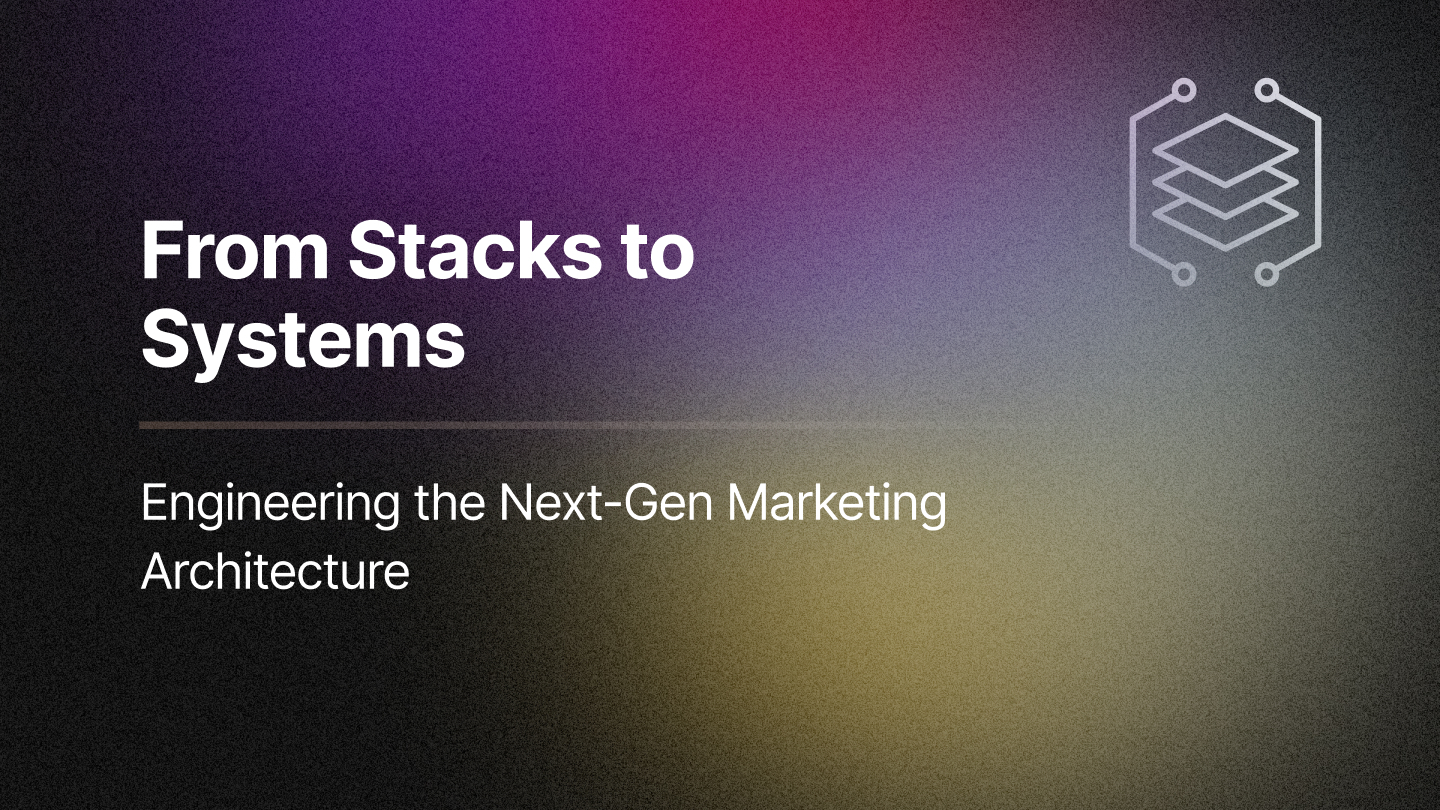Why Point Solutions Are Reducing in Viability
The landscape of B2B marketing intelligence is shifting. The era of point solutions—where marketers rely on multiple independent tools is drawing to a close. The bar and ability for these solutions to exist independently have become increasingly difficult, especially as B2B marketers face tighter budgets and heightened scrutiny on go-to-market (GTM) spending. To thrive, point solutions must provide something no one else can offer, justify their pricing and value proposition deeply, and deliver a speed to a value that others cannot match while minimizing the additional effort required to deploy, enable, and adopt.
In today’s business environment, where efficiency is paramount, maintaining multiple individual tools is neither sustainable nor cost-effective for customers.
The Rise of the Compound Startup Model
The industry is moving towards the “Compound Startup” model, a concept first suggested by Rippling CEO Parker Conrad (watch the video here from SaaStr, Europa).
A compound startup is one that integrates multiple functionality modules/products on top of a common data model and technology architecture. The compound startup solves multiple use cases for customers while leveraging economies of scale across research and development (R&D), GTM, and customer success.
As opposed to the common wisdom of “focus” compound startups are intentionally multi-product and multi-functionality.
Compound startups eliminate the need to rewrite or redevelop many engineering, QA, and domain context-dependent issues, significantly improving efficiency and effectiveness compared to point solutions. The learning curve is also enhanced, allowing teams to build on existing knowledge and drive innovation more effectively.
As a “Point Solution,” it makes deep sense to move to a Compound Startup model to deepen your workflow for existing users, reduce tool fatigue of customers, as well as tap into other use-cases to expand share of wallet faster in existing customers.
Customer Advantages of Adopting a Compound Startup
Compound startups have several advantages for customers:
- Addressing multiple needs with a single “compound product”
- Free up a budget with favourable pricing
- Reduced systems maintenance complexity
- Reduced vendor management overhead
- Common UX and user familiarity
- Built on a common data hub so the meta-data model and data integrations don’t have to be redone for every use case
- Built on a common technology stack so security, performance, and scalability concerns don’t need reviews for every use case
Competitive Barriers to Entry of Compound Startups
Once a point-solution company adopts a compound startup model and executes successfully, it not only drives faster revenue growth but also creates barriers to entry. Compound startups ( built on strong integrated foundations) can create functionality to replace other Point Solution SaaS tools in a matter of 2-3 months (calendar time) and a few weeks/months of effort.
Compound startups need to build "Just Enough" to replace other point solutions. It is a version of the innovator dilemma, where a new startup disrupts/replaces an established player by providing a convenient (but less sophisticated) and/or low-cost experience. But, in this case, the new point solution startup itself is being challenged in its core use case by a compound startup.
Market and Investment Trends
Market and investment trends are indicative of preference towards “Compound Startups”. According to a 2022 McKinsey report, companies that offer integrated, multi-functional solutions are seeing 30-40% higher customer retention rates compared to single-function startups, and a Gartner study found that by 2025, 70% of enterprises will seek vendors that offer end-to-end solutions, driving demand for compound startups that can provide integrated services across multiple domains.
Further, investors are increasingly favoring startups that offer broader solutions. PitchBook data from 2023 indicates that 65% of venture capitalists are more likely to invest in startups that offer a combination of AI, data integration, and analytics tools, reflecting the compound startup model.
These statistics suggest a growing trend towards the compound startup model, where integrating multiple functionalities into a cohesive offering is becoming a key competitive advantage.
Compound Startups Require a Clear Strategy and Strong Execution
However, building a successful compound startup requires a clear strategy and strong execution. Else, it can quickly overwhelm startup leaders and teams. Most startups can expand their use cases for the same user persona, function, or industry. This can lead to the creation of vertical or horizontal compound startups. Essential elements for a successful compound startup include:
- Platform thinking: Build a common platform across multiple layers (infrastructure, data, application, AI)
- Parallel Execution: Ability to execute multiple-use cases in parallel
- Strong Product and Engineering Management: Multiple product and engineering “pods” or teams need to be in sync on defining, extending, and standardizing a common data model & technology stack
- Strong Customer Success and Professional Services: Compound startups need the ability to onboard and enable customers across multiple use cases, requiring a higher bar on the customer success and professional services teams.
Examples of Compound Startups in B2B Marketing Intelligence
At RevSure, we anticipate compound startup clusters forming around key personas, persona-based pain points, and interconnected use cases on a shared data, tech, and AI stack. For example, in the B2B GTM Intelligence space, this might include:

- B2B Attribution: Combining Full Funnel Intelligence + Attribution + Pipeline Predictions & Acceleration (RevSure.AI)
- B2B Revenue Intelligence: Combining Sales forecasting, Sales Automation, Conversation Intelligence, Sales productivity & execution (like Clari, Gong, Outreach)
- Website Engagement & Intelligence: Combining website engagement and website intelligence and tracking and playbook execution (Warmly)
The Competitive Advantage of Cross-Border Business Models
Cross-border startups play a crucial role in the success of the compound startup model. These startups inherently bring a significant “cost advantage” that gives them the leverage they need to execute on a compound startup model.
This approach is evident in corridors like the US-India and US-Israel, which are seeing increased funding and collaboration. A recent study found that startups with cross-border operations can achieve operational cost savings of up to 40%, contributing to a lower overall burn rate. Further, a McKinsey study found that cross-border teams working in different time zones can increase productivity by up to 20% through continuous operations.
Besides driving capital efficiencies, cross-border startups foster innovation and speed by leveraging diverse insights and expertise.
Conclusion
The transition from point solutions to the compound startup model represents a significant opportunity for innovation and growth in B2B marketing intelligence. The future of B2B marketing intelligence lies in integrated systems that empower teams to deliver more value, enhance customer experiences, and drive sustainable growth. By embracing this approach as customers of compound startups, marketers can streamline operations, reduce costs, and enhance the effectiveness of their strategies.
Related Blogs








